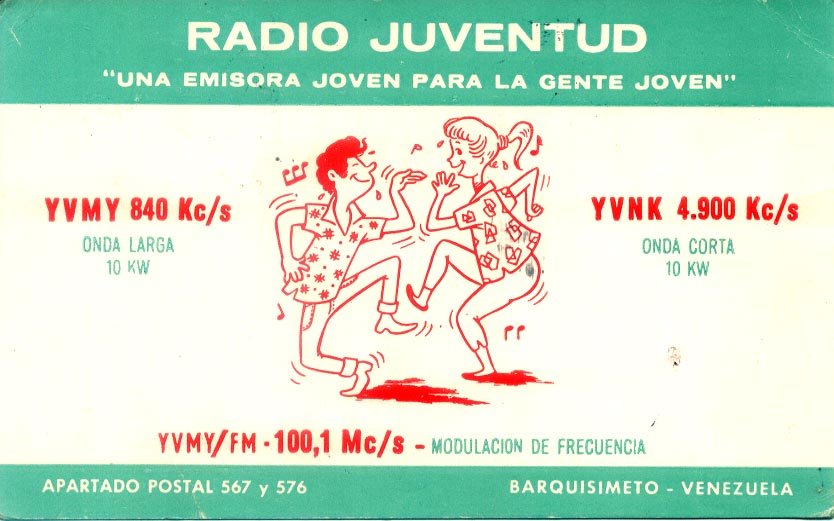Radio Juventud: Circa 1970
/Many thanks to SRAA contributor, Dan Greenall, who shares the following recording and notes:
Broadcaster: Radio Juventud, Barquisimeto, Venezuela 1970
Frequency: 4.900 MHz
Reception location: Ancaster, Ontario, Canada
Receiver and antenna: Hallicrafters S-52 using a longwire antenna
Notes: Back in the 1970's, many Venezuelan radio stations could be heard throughout the 60 metre band. 5 of these regularly logged here in southern Ontario belonged to La Cadena Venezolana de Radiodifusion. They were Radio Yaracuy, Radio Lara, Radio Universo, Radio Barquisimeto and Radio Juventud, the latter of these recorded in late 1970 on 4900 kHz identifying their AM, SW and FM stations by call letter and frequency in Spanish. Lead in music is the tune "The Age of Aquarius." They were all good verifiers and the cards were quite similar in design.








